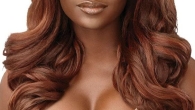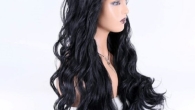
Unveiling the Secrets: A Guide to Wearing Wigs with Confidence
Wigs offer a world of possibilities for hairstyling enthusiasts and individuals seeking a change in their look. Whether you’re experiencing hair loss, experimenting with new styles, or simply want to protect your natural hair, wigs provide a versatile and fun way to express yourself. But for newcomers, venturing into the world of wigs can feel daunting. Fear not! This comprehensive guide unravels the mysteries of wig-wearing, equipping you with the knowledge and confidence to rock your new look.
Understanding Wigs: Types, Materials, and Construction
Before diving into the application process, familiarizing yourself with different wig types is crucial. Here’s a breakdown of the most common wig constructions and materials:

-
Lace Front Wigs: These wigs feature a sheer lace frontal along the hairline, creating a realistic and natural look. Lace front wigs can be made from synthetic or human hair.
-
Full Lace Wigs: Offering the most realistic hairline, full lace wigs are constructed with a lace base throughout the entire wig cap. This allows for maximum styling versatility, as the hair can be parted and styled freely.
-
Synthetic Wigs: Made from synthetic fibers, these wigs are generally more affordable and require less maintenance than human hair wigs. However, they may not offer the same level of heat styling flexibility.
-
Human Hair Wigs: Crafted from real human hair, these wigs provide the most natural look and feel. They can be styled with heat tools just like your own hair, but require more care and maintenance.
Beyond Construction: Additional wig features to consider include wig cap size (average, large, or small), hair length, color, and style (straight, curly, wavy).
Preparing for Wigs Application: Essential Tools and Pre-Wig Steps
Now that you’ve chosen your perfect wig, it’s time to prep for application. Here’s what you’ll need:
-
Wig Cap: A wig cap helps secure your natural hair and creates a smooth base for the wig.
-
Wig Stand (Optional): A wig stand is a handy tool for storing and styling your wig.
-
Wig Comb or Brush: Choose a comb or brush specifically designed for wigs to avoid damaging the fibers.
-
Bobby Pins: These will help secure the wig in place.
-
Wig Grip (Optional): A wig grip provides additional security and prevents the wig from slipping.
-
Scissors (Optional): For minor wig trimming or customizing the hairline on certain wig types.
Pre-Wig Prep:
-
Wash and condition your hair (if applicable): If you’re wearing your natural hair under the wig, ensure it’s clean and detangled for a comfortable fit.
-
Braid or twist your hair: Braiding or twisting your hair flat against your head creates a smooth base and helps conceal your natural hair underneath the wig.
-
Put on a wig cap: Stretch the wig cap over your head, tucking in any loose strands of hair.
The Art of Application: Putting on Your Wig Like a Pro
Ready to transform your look? Let’s walk through the steps of applying your wig:

-
Position the wig: Hold the wig at the front hairline, aligning it with your natural hairline.
-
Place the wig on your head: Carefully pull the wig back over your head, ensuring the front hairline sits comfortably.
-
Adjust the wig straps (if applicable): Most wigs have adjustable straps at the back for a snug fit. Tighten or loosen the straps as needed.
-
Secure the wig: Use bobby pins to secure the wig to your wig cap or hair at the temples, nape of the neck, and around the ears.
-
Style the wig (optional): Once secure, you can gently style the wig using a wig comb or brush. Human hair wigs can be styled with heat tools on a low setting.
Pro Tip: For a more natural look, gently pluck a few hairs from the wig’s hairline to create a less uniform appearance.
Maintaining Your Masterpiece: Wigs Care and Styling Techniques
Keeping your wig in pristine condition extends its lifespan and ensures it continues to look its best. Here are some essential wig care tips:
-
Storing Your Wig: When not in use, store your wig on a wig stand or mannequin head to maintain its shape. You can also store it in a breathable mesh bag or the box it came in.
-
Washing Your Wig: The frequency of washing depends on how often you wear your wig and your lifestyle. Synthetic wigs generally require less frequent washing than human hair wigs. For synthetic wigs, use a cool-mist spray bottle with a mild shampoo solution designed specifically for wigs. Rinse thoroughly with cool water and allow the wig to air dry on a wig stand. For human hair wigs, use a gentle shampoo and conditioner formulated for human hair. Wash in cool water and condition as needed. Let the wig air dry completely before storing.
-
Brushing and Detangling: Brush your wig gently with a wig brush or comb specifically designed for wigs. Start from the ends and work your way up to the roots to avoid pulling or snagging the hair. Brush your wig daily for synthetic wigs and after each wear for human hair wigs.
-
Heat Styling (Human Hair Wigs Only): Human hair wigs can be styled with heat tools like flat irons and curling irons. However, use low heat settings and avoid excessive heat styling, as it can damage the hair. Use a heat protectant spray before applying heat.
-
Minimizing Shedding: All wigs experience some shedding, especially during the first few wears. This is normal and doesn’t indicate a quality issue. To minimize shedding, gently brush your wig before wearing it.
Unleashing Your Creativity: Styling Your Wigs for Different Occasions
The beauty of wigs lies in their versatility. With a little creativity, you can style your wig to suit any occasion or mood. Here are some inspirational ideas:

-
Classic and Chic: For a timeless look, opt for a sleek and straight style or elegant waves.
-
Bold and Beautiful: Embrace volume and texture with voluminous curls or a high ponytail.
-
Effortlessly Edgy: Channel your inner rockstar with a choppy cut or a side-swept fringe.
-
Adding Accessories: Elevate your wig style with headbands, scarves, barrettes, or hair clips.
-
Experiment with Color: Don’t be afraid to explore bold and vibrant wig colors for a truly unique look.
Remember: The possibilities are endless! Explore online tutorials, browse wig styling inspiration on social media, and most importantly, have fun experimenting with different styles.
Troubleshooting Common Wig Woes: Solutions for Wig-Related Hiccups
Even seasoned wig wearers encounter occasional challenges. Here’s a quick guide to mengatasi (Indonesian for “overcoming”) common wig problems:
-
Wig Itchiness: If your scalp feels itchy under the wig, ensure your hair is clean and sweat-free. Use a wig grip or cap to create a barrier between your scalp and the wig. If the itchiness persists, consult a dermatologist to rule out any underlying skin conditions.
-
Wig Slippage: A loose wig can be frustrating. Tighten the wig straps or use a wig grip for added security. Bobby pins can also be strategically placed to secure the wig in place.
-
Wig Tangling: Gently detangle your wig with a wig comb or brush before and after wearing it. Avoid using harsh brushing techniques. Consider using a detangling spray designed for wigs.
-
Wig Matting: Over time, wigs can develop matting, especially synthetic wigs. To prevent matting, store your wig properly and brush it regularly. If your wig becomes matted, gently detangle it with a wide-tooth comb starting from the ends. In severe cases, a wig specialist might be able to help revive the wig.
Embrace Your Confidence: Owning Your Wig Look
Wearing a wig is a journey of self-expression and empowerment. Don’t let fear or hesitation hold you back. With the knowledge and tips provided in this guide, you’re well-equipped to wear your wig with confidence and rock any style you desire. So, embrace the versatility and freedom that wigs offer, and flaunt your unique look with pride!












Leave a Reply